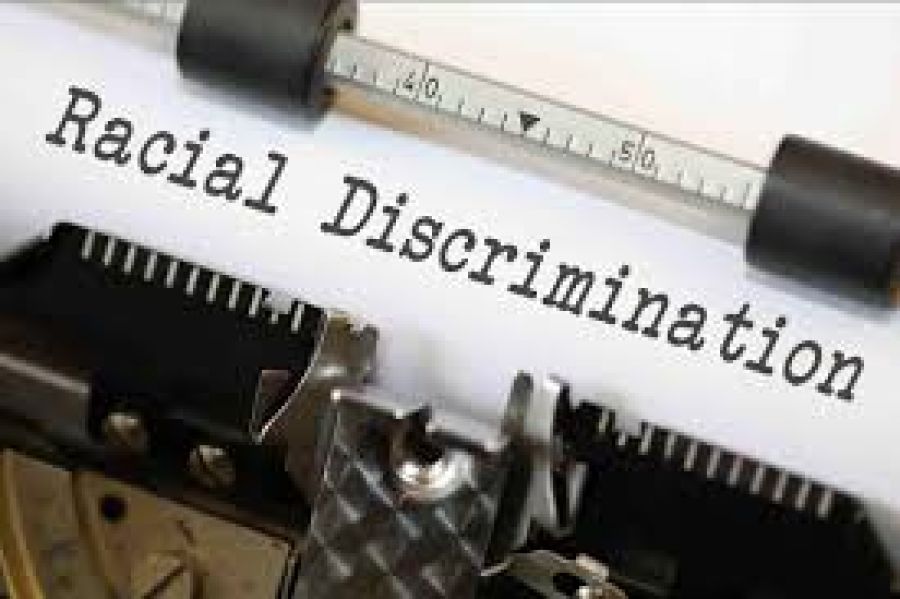Blog

Blog
Call us today for a free initial consultation on 0800 772 0341
The work that can be done to prevent race discrimination in the workplace
Published 30 September 2019


The work that can be done to prevent race discrimination in the workplace
Race discrimination is abhorrent and combatting it should be a top priority for all employers.
Employers are advised to take a zero-tolerance approach to any type of discrimination.
Knowing how to identify race discrimination, how to respond to it and how to deal with it is crucial.
Race discrimination occurs when you are treated differently because of your race in one of the situations covered by the Equality Act (1)
In the Act, race can mean your colour, or your nationality (including your citizenship). It can also mean your ethnic or national origins, which may not be the same as your current nationality
The treatment could be a one-off action or as a result of a rule or policy based on race. It does not have to be intentional to be unlawful.
Last year the Trade Union Congress (TUC) reported that there were 3.2 million BME employees in the UK and that they still encounter many problems at work (2) These included:
- Abuse at work: more than a third (37 per cent) of BME workers had been bullied, abused or singled out at work.
- Effects of racism: polling showed that over half (57 per cent) of BME women affected by bullying and harassment have suffered mental health problems.
Race discrimination can occur during the recruitment process. Earlier this year it was reported that researchers sent around 3,200 fake job applications for both manual and non-manual jobs (3)
All of the fictitious candidates, whose names were based on their ethnic background, were British citizens, or had moved to the UK by the age of six, and had identical CVs, covering letters and years of experience. While 24 per cent of white British applicants received a call back from employers, only 15 per cent of ethnic minority applicants did.
Employers are encouraged cast the recruitment net wide to attract a diverse range of candidates. Using an applicant tracking system to evaluate candidates on a neutral basis can also help to eliminate unconscious bias during recruitment (4)
Within the workforce the first problem for employers is to discover any problems that may exist. Victims of race discrimination will often feel isolated, afraid and even embarrassed to report what has happened, or is happening to them.
Understanding the workforce and the workplace culture is vital. There is a current tendency to excuse or dismiss racially offensive comments and jokes as just banter. Such incidents are not always clear to management, but conducting confidential staff surveys is a good way to gain knowledge of employees’ experiences in the workplace.
Training is important as sometimes racial discrimination is unintentional. Employees may have unconscious biases they did not even realise meant that they were being discriminatory. Employers should be proactive and train employees so that they are well-informed on the subject. This will also mean that they can be held accountable for their actions.
If any incidents of race discrimination are reported or identified they should be dealt with quickly and fairly. ACAS has produced a guide on race discrimination providing an insight into how it can occur in the workplace, how it can be dealt with and how to reduce the chance of future discrimination (5).
The main focus in dealing with racial discrimination is often on the perpetrator and ensuring their unlawful behaviour is addressed. As well as sanctioning the harasser it is also vital to support the victim, which falls within an employer’s duty of care.
Staff should feel confident and empowered to report race discrimination. They should be informed and aware of how to raise such complaints and about the process that will be followed.
References
1.The equality act [Internet] www.equalityhumanrights.com [Cited 24.9.19] https://www.equalityhumanrights.com/en/advice-and-guidance/race-discrimination
2. Racism in the workplace [Internet] www.tuc.org.uk [Cited 24.9.19] https://www.tuc.org.uk/news/bme-people-still-facing-racism-and-discrimination-work-says-tuc.
3.Race Discrimination in the recruitment process [Internet] www.bbc.co.uk [Cited 24.9.19] https://www.bbc.co.uk/news/uk-46927417
4.Eliminating unconscious bias[Internet]www.reed.co.uk [Cited 24.9.19] https://www.reed.co.uk/career-advice/ats-what-you-need-to-know/
5.Discrimination [Internet] www.acas.co.uk [Cited 24.9.19] https://www.acas.org.uk/index.aspx?articleid=1849
A reputation built on success
If you're facing any of the issues in this article - or need guidance on disciplinary, grievance, or redundancy matters - call us today. Our expert Trade Union Representatives are available to represent you in crucial workplace meetings, with pay as you need support.